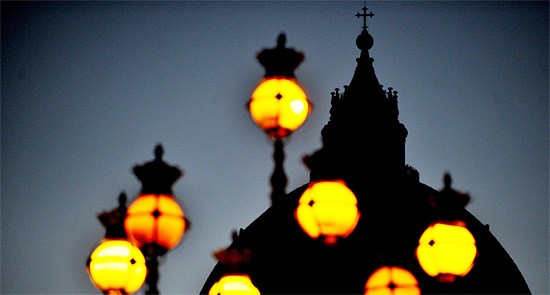
With the all-important chimney stack in place in the Sistine Chapel, the conclave of cardinals is about to begin deliberations to decide the next pontiff. The curial group, built around some cardinals of the central administration (Roman Curia ), are expected to back a candidate from beyond Europe, the most likely being the Brazilian Odilo Pedro Scherer, 63, Archbishop of San Paolo. This would give an impression innovation.
However, Scherer is both an outsider and an insider. He has worked in the Vatican and is on the cardinalate board for the Istituto per le Opere di Religione (the IOR, or the Vatican Bank). An advantage for the curialists in the choice of a non-Italian such as Scherer is he would almost certainly choose an Italian secretary of state, as Pope Emeritus Benedict XVI and his predecessor, pope John Paul II, did. If the next pope is not hands-on, whoever occupies the No. 2 position, the secretary of state, will not only run the Vatican itself but will have a big influence throughout the Catholic Church.
The curia is not made up only of Italians, and not all Italians in the curia are conservatives; for instance, Cardinal Gianfranco Ravasi, the Minister for Culture, is a biblical scholar and a brilliant communicator with an extraordinary range of cultural interests. But the curial group of cardinals are suspicious of electors arriving in Rome and talking as if they have the solutions to the church’s problems when they have very spotty records in their own dioceses.
The group includes diocesan bishops who have strong ties with the Curia, usually after having worked there. An example is the polyglot Cardinal Malcolm Ranjith, archbishop of Colombo, Sri Lanka, who is mentioned as a possible alternative to Scherer.
But it’s likely Cardinal Angelo Scola of Milan, 71, is the conclave’s second choice. He is anything but cuddly and runs a tight ship. The son of a truck driver, sturdy Scola was nourished by German theology. He founded journal Oasis, devoted to dialogue with Islam, and is much concerned with the role of religion in democracies; he has recently returned from lecturing in London. He was Patriarch of Venice before transferring to Milan; five of the eight popes of the last century came from either Venice or Milan.
“Will the electors carry on from where he left off and pick up the idea of a more collegial governance …?”
He was one of the founding members of the Comunione e Liberazione ecclesial movement, which began in Italian universities in response to the 1968 student unrest and holds that Christianity is not a philosophy but a personal encounter with Jesus Christ. When Scola became Patriarch of Venice he said he could no longer be identified with Comunione e Liberazione, which is just as well — it has acquired extensive influence in northern Italy and recently some members have been accused of corruption in running the Lombard region. Before going to Venice, Scola was an energetic rector of the pontifical Lateran university in Rome, which gave him valuable knowledge of the Roman Curia without being absorbed by it, an asset for someone expected to reform it.
The Capuchin friar who has been missionary in Easter Island but is now Archbishop of Boston, Cardinal Sean Patrick O’Malley, 69, is mentioned as a fallback if Scola’s votes do not grow from an estimated initial 30-40 and the conclave can’t decide on Scherer.
Opposed to the curial group are the cardinals who think the Vatican has made too many mistakes in its relations with dioceses, in the murky operations of the IOR, in responding to the theft of documents from the papal apartment and in mishandling cases of sexual abuse by priests. It is likely that if the curial group’s candidate and that of the group’s opponents cannot reach the needed two-thirds, a “third man”will make the running. The field is wide; one name is Cardinal Peter Erdo of Budapest, who is president of the European Bishops’ Conference.
The conclave is overshadowed by Benedict’s renunciation and the Vatican Council of 1962-65, which ended the siege mentality prevailing for almost a century and seemed to open the way to a more collegial church. The Vatican Council has become a benchmark for subsequent popes. Benedict professed his allegiance but leaned far towards the right-wing element in the church and lost the élan of the council. Against those who stressed the newness of the council, he stressed its continuity with what preceded it. As a result, many were disconcerted by his surprise renunciation — it was legitimate but a discontinuity.
Will the electors carry on from where he left off and pick up the idea of a more collegial governance, in which the next pope will make decisions with fellow bishops?
The name of the man who could do this has to emerge from the ballot box beneath Michelangelo’s Last Judgement. Will it be Scola, Scherer, or someone else? As soon as the name emerges, the winner chooses his papal name (white clothes have already been prepared in three sizes — tall, short and sturdy), then goes into the sacristy of the Sistine Chapel, whose name is significant also: la stanza delle lacrime — the room of tears, a reminder that he has been chosen for mission impossible.
*Desmond O’Grady has been Vatican correspondent for The Washington Post and The US National Catholic Reporter







Just envisioning bob the builder knocking a hole in the Sistine chapel roof for the chimney